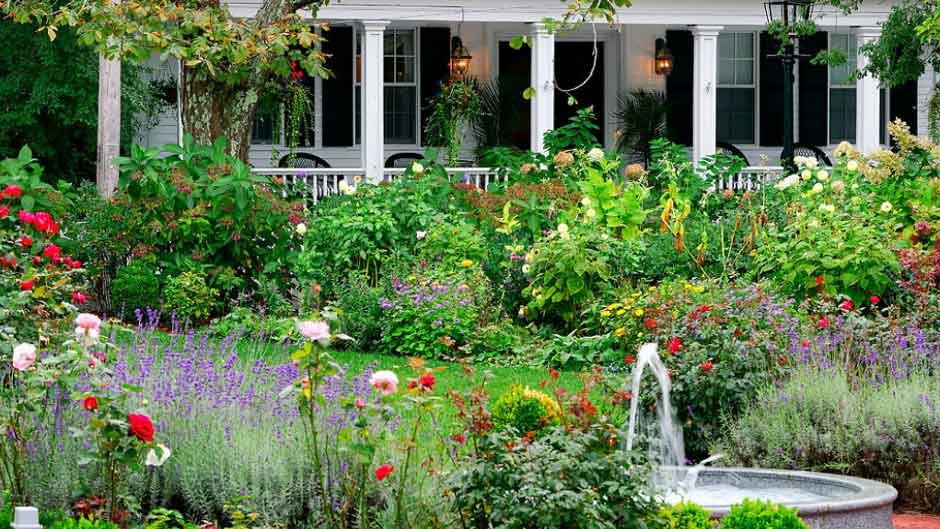Fragrant blooms have a special way of lifting a space, turning even the plainest patch into something quietly magical.
Choosing the right ones reflects your style and draws in welcome guests such as bees, butterflies, and other helpful visitors, building a garden that lives and breathes alongside you.
Whether you’re piecing together a few showstoppers or shaping a peaceful corner brimming with scent, these suggestions will offer just the nudge to begin.
Consider Your Climate and Soil
For a scented garden that does more than look good, it helps to work with what you’ve got—your local weather and the soil beneath your feet.
Take lavender, for instance. It thrives in dry spots with fast-draining soil, basking happily in full sun. Jasmine, by contrast, prefers damp air and warmth.
Roses are fairly adaptable but do their best in rich, well-drained earth and mild, steady sunshine. Sweet alyssum leans towards cooler corners and handles partial shade with ease.
A quick soil test will tell you a great deal about what’s going on underground. Local garden centres, neighbours, and garden landscaping experts, can often share useful advice on what grows well nearby.
When your plants are at home in their setting, they grow with confidence—and the scents they release will reward your efforts many times over.
Choose Flowers with Different Bloom Times
One trick to keeping the fragrance going throughout the year is mixing plants that bloom at different times.
This creates a garden that changes with the seasons while offering a steady stream of scent. It’s good news for pollinators, too, who rely on continuous blooms.
Lilacs begin things gently in spring. Summer brings the deeper notes of gardenias. As autumn settles in, heliotropes add warmth and richness. Even in winter, the likes of honeysuckle can keep the air delicately perfumed.
Planning when each plant comes into flower makes all the difference. Think of it as setting the stage for a gentle rotation, each plant taking its turn.
A garden arranged in this way doesn’t just look and smell lovely—it also carries a quiet rhythm that matches the passing months.
Assess Planting Location and Brightness
Where you position your plants matters more than most people realise, especially when scent is involved.
Many fragrant varieties need good light to perform their best, so take time to see where the sun lingers across the day.
South-facing spots tend to get the most warmth, perfect for flowers like roses or lavender that respond to sunshine with a stronger scent.
That said, shadier areas shouldn’t be overlooked. While not typically home to strongly scented blooms, they can support lush foliage—ferns, hostas, or similar plants—which lend structure and calm to a garden.
Matching light levels to the right plants keeps things thriving without too much intervention. Furthermore, if it all seems a bit much, there are landscape designers who can take on the heavy lifting while you enjoy the finished space.
Mix Scented Flowers with Foliage Plants
Combining fragrant blooms with aromatic leaves is a clever way to layer scent and texture without overcrowding.
Herbs like thyme, mint, or rosemary pair surprisingly well with floral favourites. Together, they create a scent profile that evolves with the breeze—sometimes herbal, sometimes sweet, always inviting.
Pop gardenias or jasmine close to those herbs, and the contrast in fragrance becomes part of the experience, not just background.
In smaller gardens, this technique also helps maximise space while adding layers of interest. Combining a border of fragrant perennials with an elevated herb bed, for instance, appeals to both the nose and the eye.
Beyond scent alone, structure and foliage play a vital supporting role in maintaining year-round appeal.
Not all plants need to flower to earn their keep. Some offer beauty through form or colour, even when scent isn’t their strong point.
Add silver foliage, like artemisia, or striped varieties like variegated sage to create visual interest. With a balance of scent and greenery, your garden can feel full and well-loved, even when not everything is in bloom.
Research Flower Scent Intensity
Each flower carries its own kind of fragrance, from the soft and subtle to the rich and assertive, and understanding these differences can help avoid mismatched combinations.
Peonies are full-bodied and dramatic, their scent carrying far and wide. Violets, by comparison, are soft and close, better enjoyed up close.
Visit a local nursery or botanical garden and take your time. There’s no substitute for experiencing scent in person. If that’s not possible, seek reviews or online threads where people share real-world notes on how flowers behave.
Moreover, scents change slightly depending on time of day, soil quality, and even recent rainfall, so keep these influences in mind while selecting your plants.
Remember that too many heavy scents in one place can feel overwhelming, especially on warm days. Mixing lighter ones keeps things fresh, rather than overpowering.
Explore Seasonal Variations
Some flowers give off their strongest fragrance at certain times of day, and it’s worth bearing this in mind as you plan.
Evening primrose releases its scent at dusk, offering a soft reward as the light fades. Roses often smell their best in the early afternoon sun.
A variety of scent timings adds subtle shifts throughout the day. There’s always something waiting to be discovered.
Beyond that, think about your windows. If a plant has a particularly strong scent, it’s often better placed a little further from your home to keep things from becoming too intense indoors.
This way, you enjoy the scent where it belongs, under the sky, stirred by the breeze.
Conclusion
A fragrant garden is more than a gathering of greenery. It’s a setting that uplifts the soul and brings quiet delight to daily life.
By selecting blooms and foliage that suit your conditions and provide variation across the seasons, you create something truly individual. Scent lingers in the air, drifting through each space and shifting with the time of day.
Whether spacious or modest, every outdoor haven holds the promise of charm. With a little care, yours can become a place to pause, breathe, and feel completely at ease.







